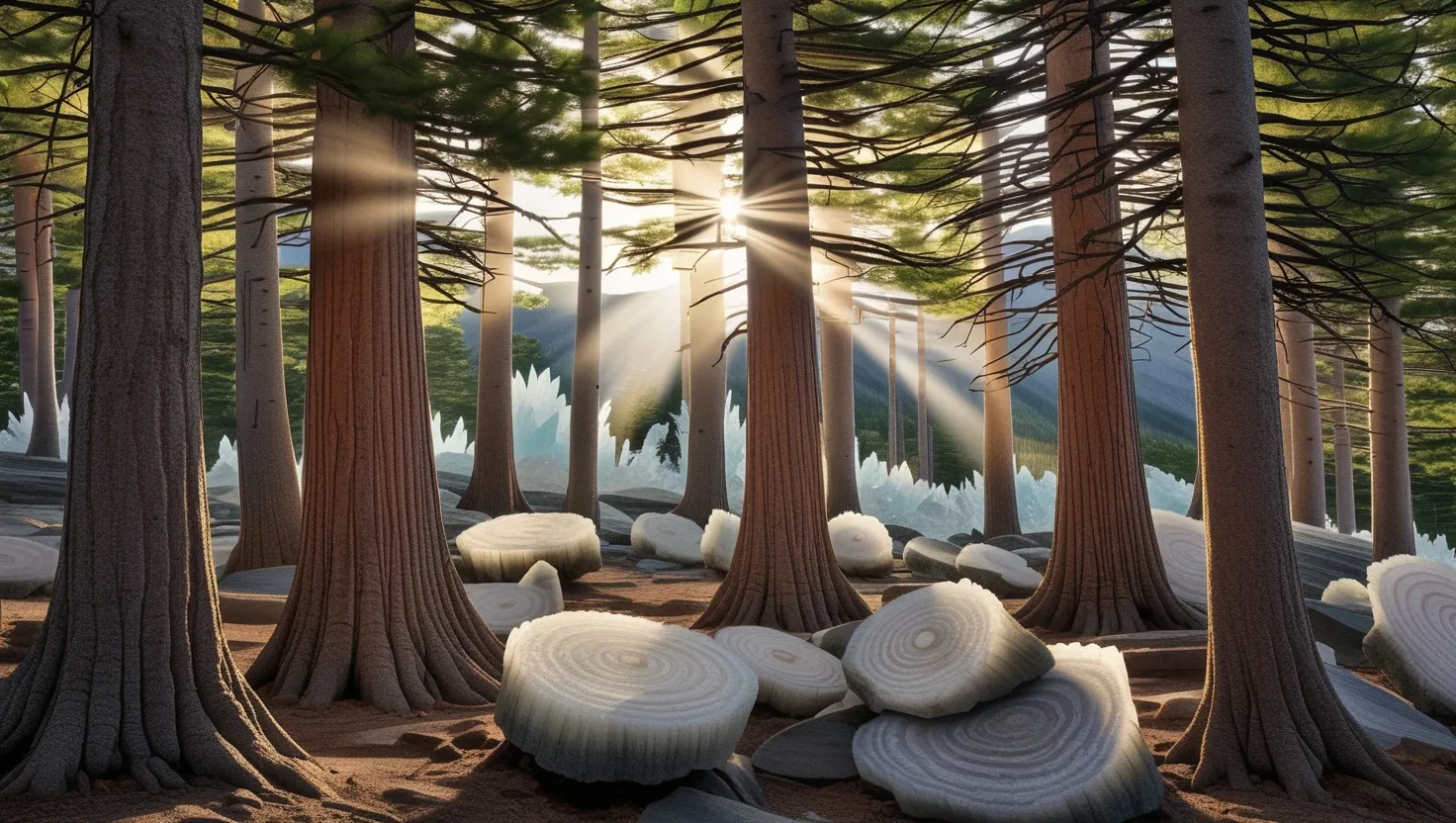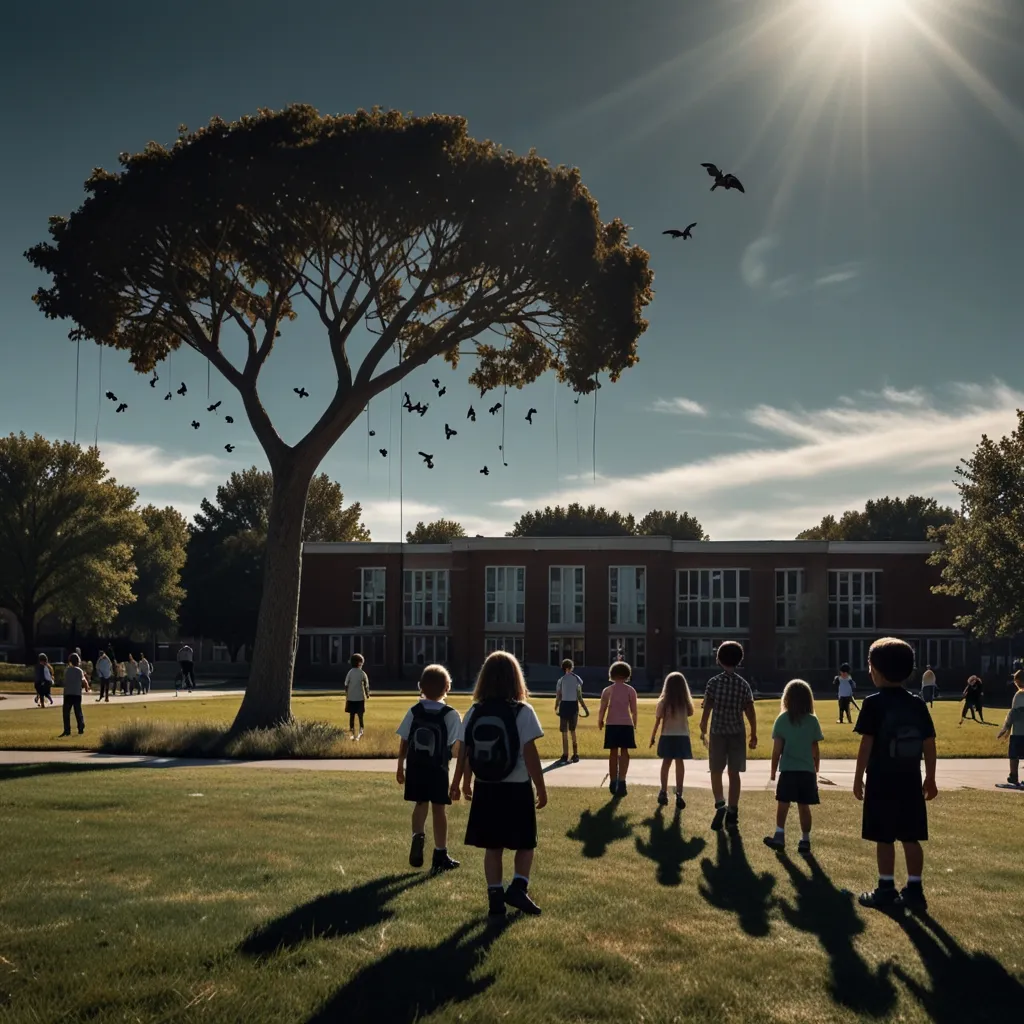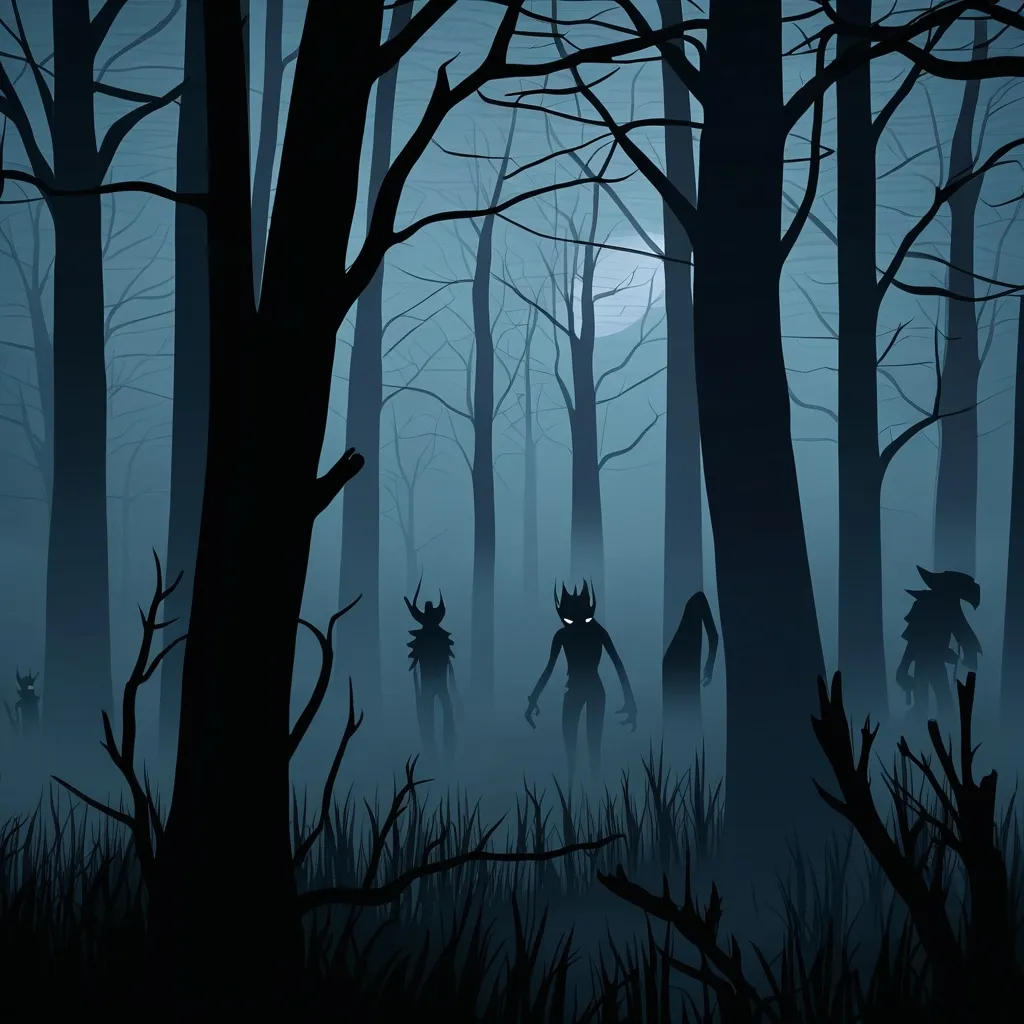In the heart of New Hampshire’s White Mountains lies a botanical enigma that has scientists scratching their heads and reevaluating long-held beliefs about tree growth patterns. A grove of ancient eastern white pines has become the center of a dendrochronological mystery, challenging our understanding of time itself as recorded in the annals of nature.
I first heard about this peculiar stand of trees from a colleague who had been conducting routine forest surveys in the area. Her voice tinged with excitement and confusion, she described a 30-acre patch where the laws of nature seemed to have taken a holiday. As I delved deeper into the research, I realized we were dealing with something truly extraordinary.
Picture this: a serene forest glade where every tree, regardless of its age or position, tells the exact same story through its rings. It’s as if these venerable pines have formed a secret pact, synchronizing their growth patterns in defiance of individual circumstances. But that’s just the tip of the iceberg.
The most mind-bending aspect of this arboreal anomaly is the presence of what researchers have dubbed “mirror rings.” Imagine cutting into a tree and finding that halfway through its core, the rings suddenly reverse themselves, creating a perfect symmetrical pattern that reads the same forwards and backwards. It’s like discovering a palindrome written in the language of nature.
“What we’re seeing here,” explains Dr. Evelyn Spruce, lead botanist on the project, “defies everything we thought we knew about dendrochronology. These trees are not just growing - they’re rewriting history.”
But how can trees rewrite history, you might ask? Well, that’s where things get even stranger. Core samples from these pines reveal growth rings that predate their carbon-dated age by centuries. It’s as if these trees are time travelers, carrying records of climatic events they couldn’t possibly have lived through.
Have you ever wondered what it would be like to step into a time machine? In a way, that’s exactly what scientists are doing when they examine these cores. They’re seeing evidence of droughts, fires, and even major historical events etched into rings that shouldn’t exist.
“The past is never dead. It’s not even past.” - William Faulkner
This quote takes on new meaning when applied to our puzzling pines. But what could be causing this temporal tangle?
The soil beneath these trees holds some clues. It’s a veritable cocktail of unusual minerals, with manganese levels off the charts and a smattering of rare earth elements thrown in for good measure. Crystalline formations, typically found deep within the earth, pepper the topsoil like alien artifacts.
Geologists have their work cut out for them too. The bedrock beneath this grove is unlike anything in the surrounding area. It’s as if this patch of forest is sitting on its own little geological island, disconnected from the rest of the White Mountains.
But perhaps the most perplexing aspect of all is the synchronicity. When one tree in the grove decides to have a bad year and produces a narrow ring, every other tree follows suit. It doesn’t matter if one tree is on a sunny slope and another is in a shady hollow - they all act as one.
Dr. Rowan Oak, a dendrologist who’s been studying the grove for years, puts it this way: “It’s like they’re all connected to some central consciousness. When one tree feels stress, they all feel it. I’ve never seen anything like it in my entire career.”
This level of synchronization raises some intriguing questions. Are these trees communicating through their root systems in ways we’ve never observed before? Could the unique geological composition of the area be influencing their growth in unprecedented ways? Or is there something about the geomagnetic properties of this specific location that’s causing these temporal anomalies?
“To understand a thing, you must become that thing, you must merge with it.” - Bruce Lee
In the spirit of Bruce Lee’s words, researchers have been living and breathing this mystery for months, trying to merge with the essence of these peculiar pines. They’ve set up camp in the grove, monitoring the trees day and night, hoping to catch them in the act of defying time.
Some of the theories being tossed around sound like they belong in a science fiction novel rather than a botanical journal. One researcher suggests that the trees might be tapping into parallel timelines, recording the growth patterns of their alternate selves. Another proposes that the unique mineral composition of the soil is causing localized time dilation effects.
While these ideas might seem far-fetched, the reality is that we’re dealing with a phenomenon that doesn’t fit into our current understanding of tree biology or geology. When faced with such an anomaly, even the wildest theories deserve consideration.
What if these trees are not an anomaly at all, but rather a window into the true nature of forest ecosystems? Could it be that all forests operate with this level of interconnectedness and temporal flexibility, and we’ve just never had the right tools or perspective to see it?
The implications of this discovery extend far beyond the field of dendrochronology. If these trees are indeed recording events from both their actual timeline and a “phantom timeline,” it could revolutionize our understanding of climate history. Imagine being able to peer into climatic conditions from centuries before a tree was even born.
But the mystery doesn’t stop at the edge of the grove. Researchers have begun to notice subtle changes in the surrounding forest as well. It’s as if the temporal anomaly is slowly spreading, influencing nearby trees to begin exhibiting similar, if less pronounced, irregularities.
This raises some concerning questions. What happens if this phenomenon continues to spread? Could we be looking at a fundamental shift in how forests grow and record time? And what might that mean for our ability to use tree rings as a reliable method of dating and climate reconstruction?
As we grapple with these questions, it’s important to remember that great scientific discoveries often come from anomalies just like this one. When we encounter something that doesn’t fit our current models, it’s an opportunity to expand our understanding and push the boundaries of knowledge.
“The most beautiful thing we can experience is the mysterious. It is the source of all true art and science.” - Albert Einstein
Einstein’s words resonate deeply with those of us studying this arboreal mystery. There’s a beauty in not knowing, in standing at the edge of discovery and peering into the unknown.
So, what’s next for the time-bending trees of New Hampshire? Researchers are planning more extensive studies, bringing in experts from diverse fields to tackle the mystery from every angle. There’s talk of using advanced imaging techniques to map the trees’ root systems, searching for clues about how they might be communicating.
Geologists are planning to drill core samples from the bedrock, hoping to uncover the secrets hidden beneath the grove. Meanwhile, physicists are setting up sensitive instruments to measure any unusual electromagnetic or gravitational anomalies in the area.
As we continue to unravel this mystery, we’re left with more questions than answers. But isn’t that the essence of scientific discovery? Every new finding opens up a world of possibilities, challenging us to think beyond our current understanding and imagine new realities.
The dendrochronological disruption in New Hampshire serves as a reminder that even in this age of advanced technology and vast scientific knowledge, nature still has the power to surprise and confound us. It’s a humbling experience, one that reminds us of the complexity and wonder of the natural world.
So the next time you’re walking through a forest, take a moment to really look at the trees around you. Who knows what secrets they might be hiding, what tales of time and history might be encoded in their rings? In the end, every tree is a time capsule, a living record of the past. And sometimes, as we’ve discovered in New Hampshire, they might even be windows into times yet to come.
What mysteries might be hiding in the forests near you? How might this discovery change the way we think about time and nature? These are questions worth pondering as we continue to explore the fascinating world of dendrochronology and beyond.






